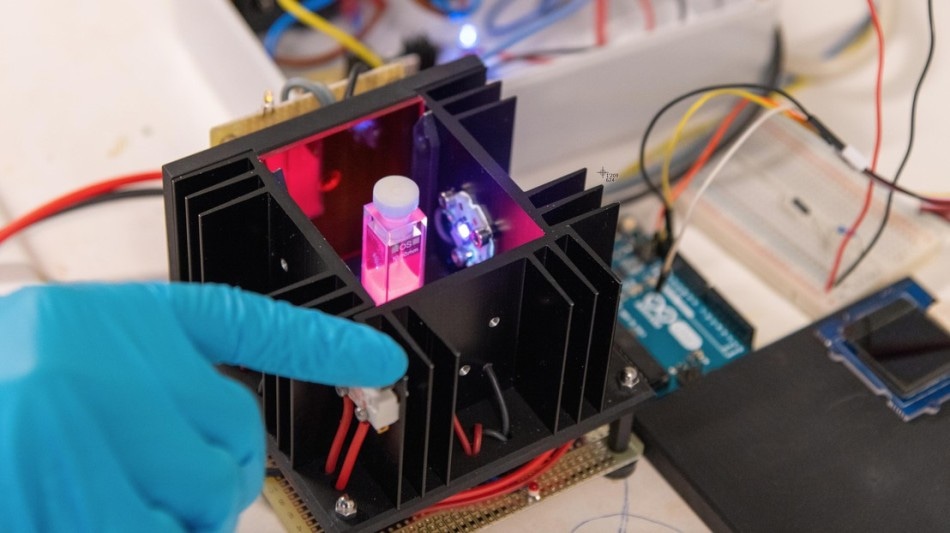Feb 12 2019
The general practice of incorporating fluoride to water has been followed in several countries, including the US, Australia, Malaysia, Brazil, Vietnam, and India. Low concentrations of below 1.5 mg/L can help prevent tooth decay and even fortify bones, but going over that level can have the reverse effect, causing critical bone and dental disease, particularly in developing fetuses and children.
 The prototype device used with SION-105 to detect fluoride anions in drinking water. (Image credit: Marie-Thé and Etienne Roux)
The prototype device used with SION-105 to detect fluoride anions in drinking water. (Image credit: Marie-Thé and Etienne Roux)
In order to keep a check on this, the WHO has fixed 1.5 mg/L as the maximum limit for fluoride in drinking water.
To determine whether drinking water is safe we need to detect fluoride in water at the level of parts-per-million (ppm). Around 1-1.5 ppm is good for teeth, but in many countries, the water sources have concentrations above 2 ppm can cause serious health issues.
Kyriakos Stylianou, Laboratory of Molecular Simulation, EPFL Valais Wallis
However, measuring fluoride at such low concentrations with satisfactory accuracy is costly and requires a well-resourced chemical lab. Therefore, fluoride contamination in water affects many developing countries at present and even some parts of developed countries.
Guided by Stylianou, a team of researchers have currently developed a device that can accurately measure fluoride concentrations using just a few drops of water—even with low-level contamination—resulting in a basic change in color brightness. Described in the Journal of the American Chemical Society (JACS), the device is called SION-105, is portable, significantly cheaper than existing techniques, and can be used on-site by almost anyone.
The vital aspect to the device is the design of a novel material that the researchers synthesized (and based on which the device is named). The material fits into the group of “metal-organic frameworks” (MOFs), compounds composed of a metal ion (or a cluster of metal ions) linked to organic ligands, thereby forming one-, two-, or three-dimensional structures. Owing to their structural versatility, MOFs can be used in a constantly growing list of applications, for example, detoxing water, separating petrochemicals, and obtaining hydrogen or even gold from it.
By default, SION-105 is luminescent, but darkens when it meets fluoride ions. “Add a few droplets of water and by monitoring the color change of the MOF one can say whether it is safe to drink the water or not,” explains Mish Ebrahim, the paper’s first author. “This can now be done on-site, without any chemical expertise.”
The scientists used the device to establish the fluoride content in various groundwater samples from the United Arab Emirates, Vietnam, and Saudi Arabia. The data matched very well when compared to measurements performed using ion chromatography, a standard technique for determining fluoride concentration in water.
This comparison showcases the performance and reliability of SION-105, which, coupled with the portability and ease-of-use of the device, make it a very user-friendly solution for water sampling in remote areas where frequent fluoride concentration monitoring is paramount.
Kyriakos Stylianou, Laboratory of Molecular Simulation, EPFL Valais Wallis
Having verified the effective functioning of SION-105 and the device, EPFL has currently filed a patent application for it. The device was built by the researcher at the Laboratory of molecular simulation, the Laboratory of Organometallic and Medicinal Chemistry, and the Electronic Workshop at EPFL Valais Wallis.